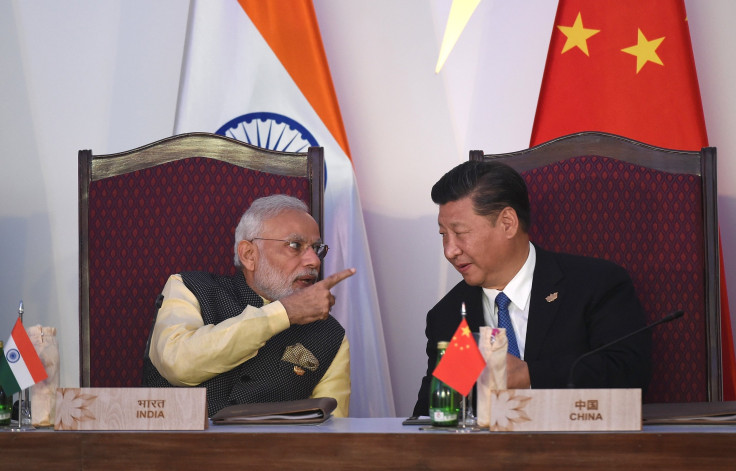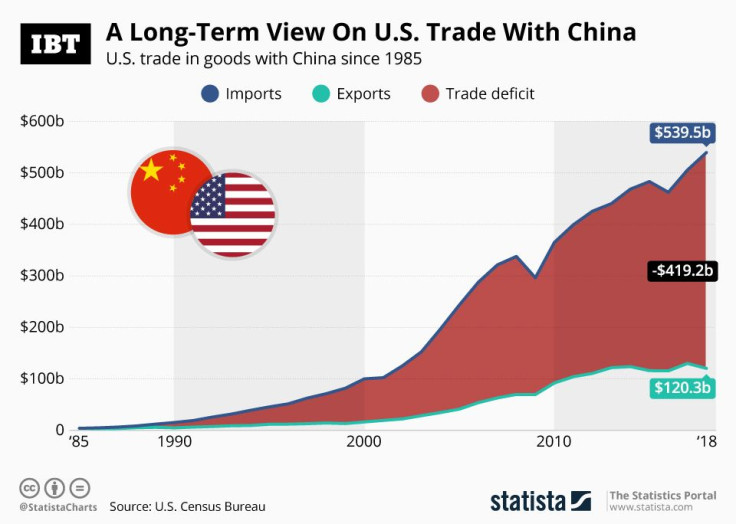'Good Friends' Xi And Modi To Meet Amid Growing Tensions With Trump

After his much-publicized meeting with "best and bosom friend" Vladimir Putin at the Kremlin, Chinese President Xi Jinping is now set to meet India's Prime Minister Narendra Modi as he tries to reach out to world leaders to unite against U.S. trade tariffs. Indian media reports said the country is expected to join China and Russia in "voicing reservations" about U.S. trade protectionism.
Chinese Vice Foreign Minister Zhang Hanhui described Modi and Xi as "good friends" and termed the meeting on the sidelines of Shanghai Cooperation Organization summit, scheduled to be held in the Kyrgyzstan capital of Bishkek on June 13-14, as "very important." The two leaders are expected to discuss the U.S. tariffs, among other things, and China said it hoped they could reach a consensus on opposing trade protectionism.
Interestingly, Modi will also meet with Putin whom Xi met recently and called his "best friend." Russia has been India's traditional ally and all-weather friend.
China is embroiled in a trade war with the United States, with both countries slapping retaliatory tariffs on each other's goods. And Trump has repeatedly said that he is not happy with the tariffs India levies on certain U.S. goods.
In February, India slashed tariffs on imported Harley-Davidson motorcycles from 100 pecent to 50 percent, after Trump called fee unfair and threatened tariffs on Indian motorcycles exported to the U.S.
But on Monday, Trump told CBS news in an interview: "We're not the foolish country that does so badly. You look at India, very good friend of mine, Prime Minister (Narendra) Modi, you take a look at what they've done, 100 percent tax on a motorcycle. We charge them nothing."
"So, when Harley sends over there, they have 100 percent tax. When they (India) send in -- they make a tremendous number of motorcycles -- when they send them in, no tax. I called him. I said it's unacceptable."
"He (Modi) reduced it by 50 percent with one phone call. I said it's still unacceptable because it's 50 percent versus nothing. It's still unacceptable. And they're working on it," Trump said.
Trump had on May 31 terminated the special market access that India enjoyed under the Generalized System of Preferences program, which gave some of its goods duty free access to the U.S. market. The U.S. trade deficit with India is $25 billion, modest compared to the $420 billion deficit with China.

Modi To Focus On Economy, Jobs
Modi just started his second term as the prime minister of india in May after a landslide win in elections held in seven phases across the country. His focus now is expected to be economic growth and jobs.
In his first term the Indian economy recorded fast growth and the it is expected to grow 7.5 percent this year and become the world's fifth largest, overtaking the United Kingdom's economy. Also, under Modi, trade with China crossed more than $95 billion last year, and is expected to cross $100 billion this year.
Unlike China and Russia, China and India have traditionally not enjoyed smooth relations, with lingering disputes over the long Himalayan border proving tough road bumps. Both countries fought a short war in the 1960s over the border, and border friction increased in recent years as Chinese troops made repeated incursions into land that India claims. Indian troops used to moved away when they spotted such Chinese incursions but in 2017, under Modi, they stood pat and resisted the Chinese in what has come to be known as the Doklam standoff. That confrontation ended with the Chinese backing away.
China had also repeated tried to foil India's attempt to designate Masood Azhar, the Pakistan-based founder of Jaish-e-Mohammed organization, a global terrorist. But that changed in May when China withdrew its objections to the move. It was considered a major diplomatic victory for Modi who had sent in Indian Air Force planes to bomb terrorist camps operated by Azhar in Pakistan following a suicide bomb attack that killed 44 paramiliatary soldiers in India's Kashmir. It was also hailed as a visible foreign policy sucess for Modi who had tried to move away from the often confused approach of previous Indian governments on global issues affecting India.
Modi and Xi have met at least four times since their much-publicized summit in Wuhan in April last year, and Indian officials have said there is scope for expansion of trade betwen the two countries if China removes non-tariff barriers to market access.
Trump is expected to meet Xi on the sidelines of the G20 summit scheduled to be held in Osaka, Japan, from June 28 to 29 and discuss the trade war. But the U.S. president also threw a question mark over that meeting when he threatened to levy 25 percent tariffs on an additional $300 billion worth of Chinese goods if Xi doesn’t attend the summit. China hasn’t yet confirmed Xi will attend the G20.
© Copyright IBTimes 2025. All rights reserved.





















